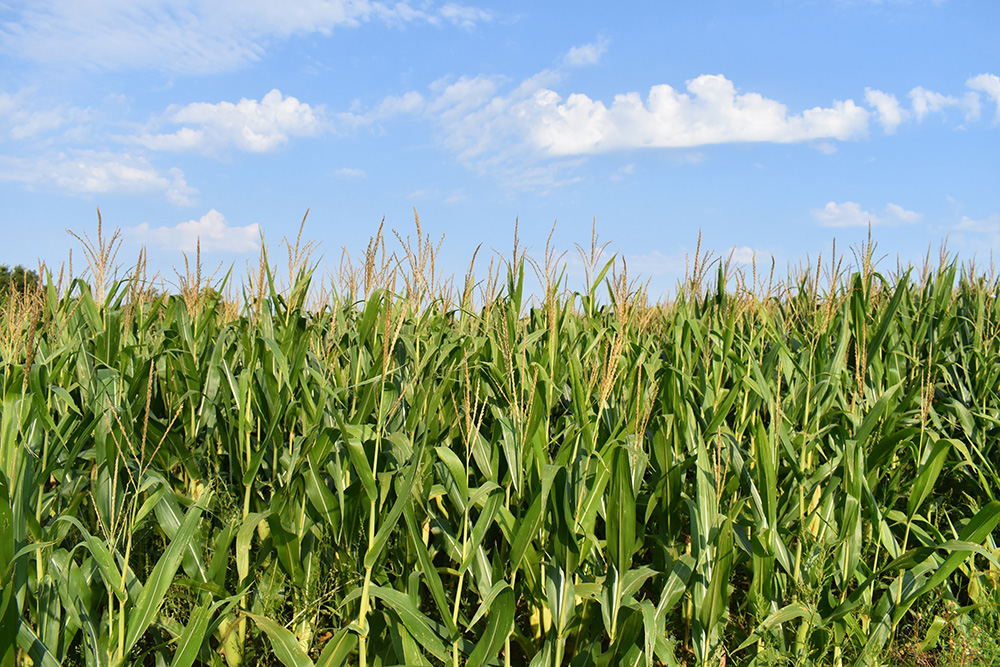In 2024, corn growers had a warm year across the Sunflower State, according to results published by the Kansas Agricultural Experiment Station.
Nationwidecorn grain production in 2024 was estimated at 14.9 billion bushels, down 3% from the 2023 estimate, according to the U.S. Department of Agriculture. The average yield in the United States was estimated at a record high 179.3 bushels per acre, 2 bushels above the 2023 yield of 177.3 bushels per acre. Area harvested for grain was estimated at 82.9 million acres, down 4% from the 2023 estimate.
According to Kansas Corn, in 2024 farmers harvested 5.8 million acres, with an average yield of 129 bushels per acre and produced 748 million bushels.
The average temperature for the year was 57.5 degrees Fahrenheit or 3.4 degrees above normal. This ranked 2024 as the second warmest of the last 130 years (tied with 1935) according to the National Centers for Environmental Information, whose monthly climate averages date back to 1895.
Precipitation
While annual precipitation averaged below normal in 2024, it was Kansas’ wettest year since 2019. 2024 was the fifth consecutive year with below-normal precipitation, but the total was closer to normal than in the previous four years.
The state’s average precipitation for 2024 was 27.38 inches, or 1.62 inches below the normal amount of 29.0 inches. Only two divisions were above normal for the year: southwest (departure +0.90 inches) and west central (+0.20 inches) Kansas. Northeast Kansas was close to normal, finishing 2024 less than one-quarter inch below normal (-0.21inches).
Diseases
Corn stunt spiroplasma (CSS, Spiroplasma kunkelii) and its associated vector (corn leafhopper, Dalbulus maidis) were deemed an emerging threat to the Kansas corn crop. Corn stunt spiroplasma was confirmed in 26 counties, and scouting efforts across Kansas confirmed active leaf hoppers in many additional counties.
Although most of the positive reports are from field corn, corn stunt spiroplasma was also confirmed in sweet corn. High levels of disease were found in late-planted and double-cropped corn, leading to potential yield reduction.
Tar spot was confirmed in low levels in five counties in the northeast corner of the state. Southern rust and bacterial leaf streak thrived during the many 90°F+ days and warm nights of 2024.
Insects
Corn pests have been well managed in the past few years with seed treatments, BT varieties targeted for specific pests, planting date manipulation and/or crop rotations. However, a few minor infestations by western bean cutworms have been reported in northwest Kansas. Also, a few instances of adult Japanese beetles clipping silks were reported from the northeast quadrant of Kansas.
Corn leafhoppers were officially identified for the first time on record in 2024. No problems were noted due to the pest in 2024, but sampling programs should be initiated to monitor for them in 2025, according to the report.
The Kansas performance tests, conducted annually by the Kansas Agricultural Experiment Station, provide farmers, Extension workers and seed industry personnel with unbiased agronomic information on many of the hybrids marketed in the state. Entry fees from private seed companies finance the tests. Because entry selection and location are voluntary, not all hybrids or varieties grown in the state are included in tests, and the same group of hybrids or varieties is not grown uniformly at all test locations. Companies submit seed treated with systemic insecticides, which can affect yield in some situations.
Three to four plots (replications) of each hybrid or variety were grown at each location in a randomized complete-block design. Each harvested plot consisted of two rows trimmed to a specific length, ranging from 20 to 30 feet at the different locations.
Explanatory information is given in summaries preceding data for each test. A summary of growing season precipitation data is given for individual test discussions. General trends in precipitation relative to normal are readily observed in the graphs.
Corn grain yields were reported as bushels per acre of shelled grain (56 pounds per bushel) adjusted to a moisture content of 15.5%.
Results are available online at www.hpj.com.




